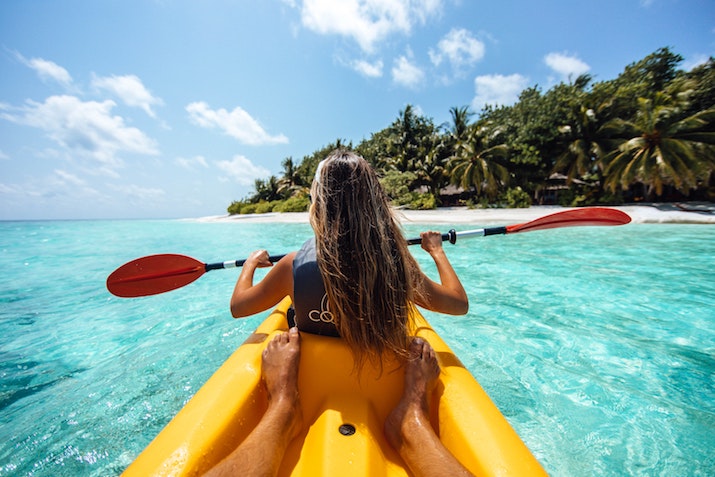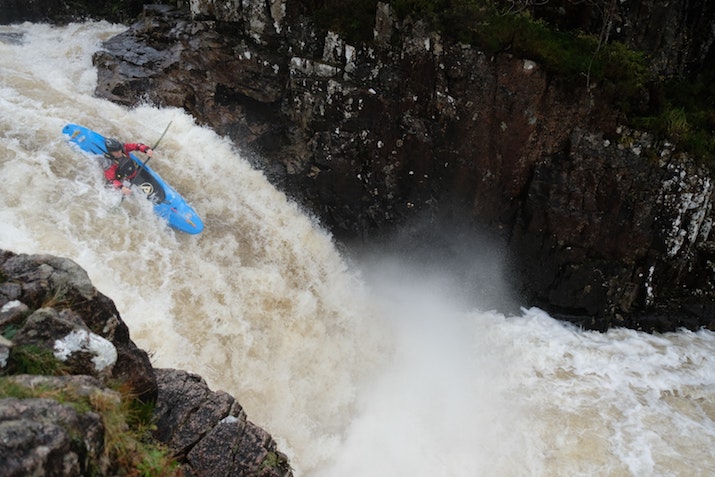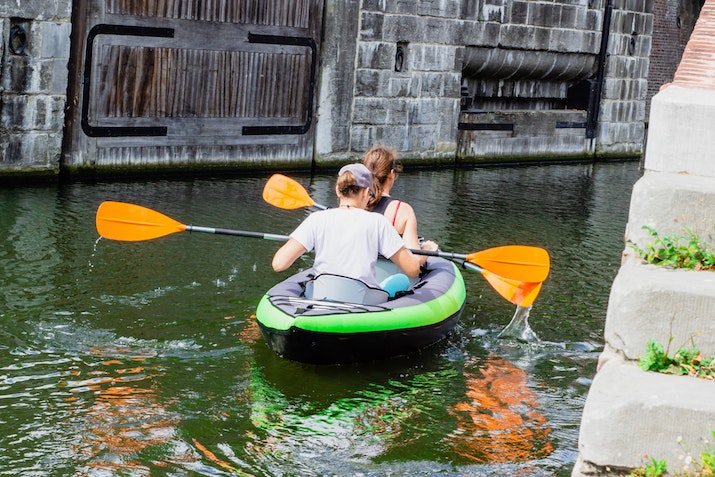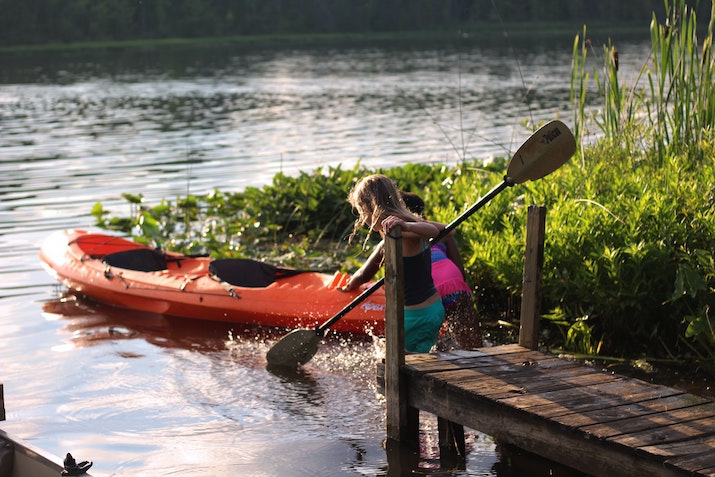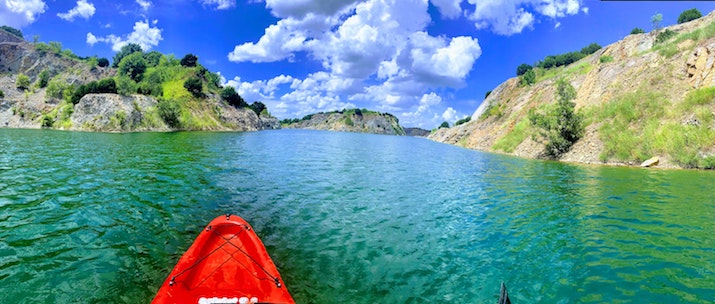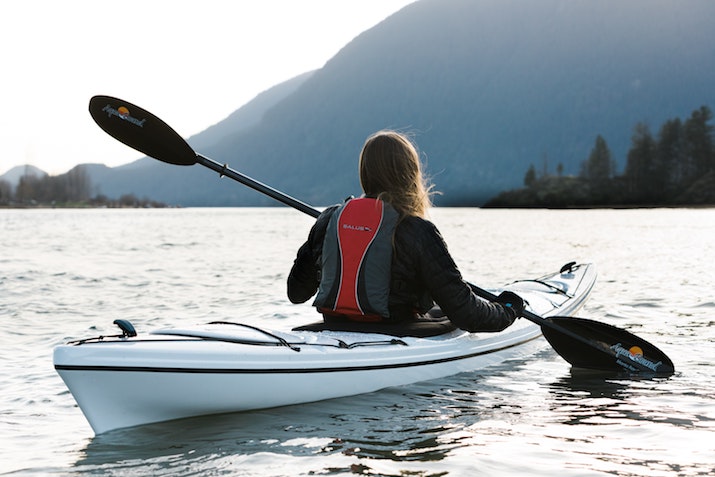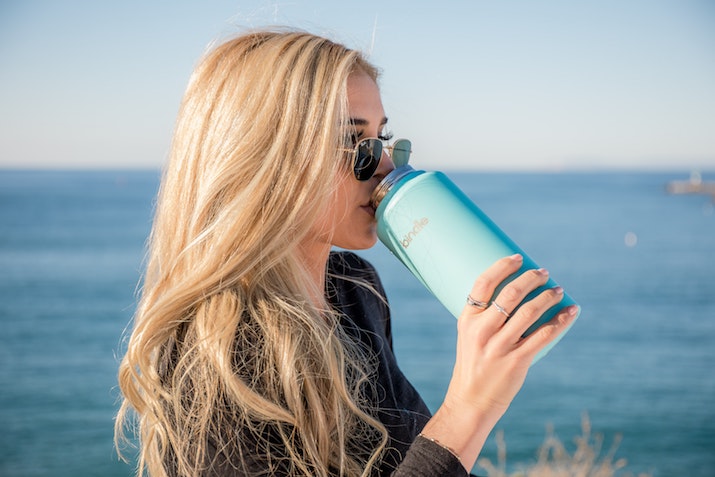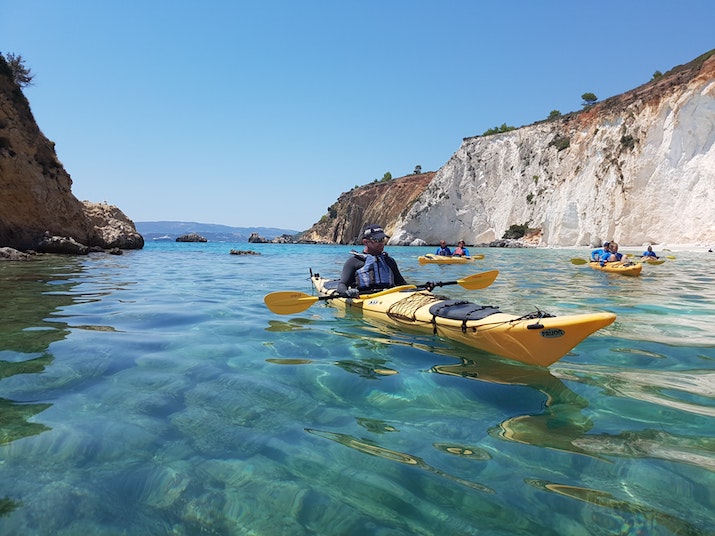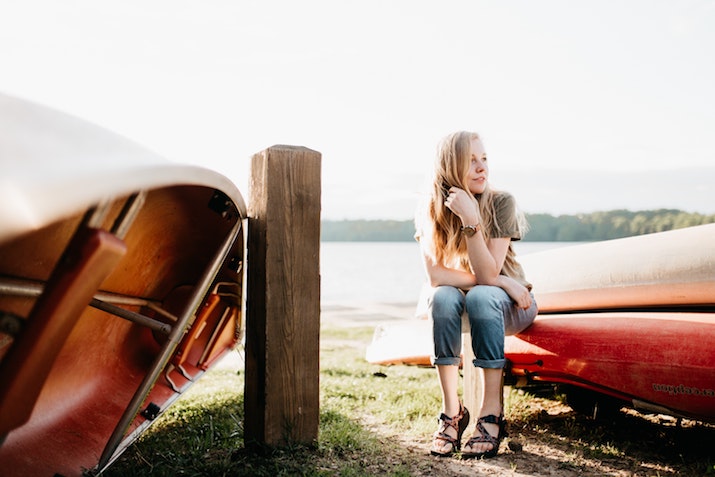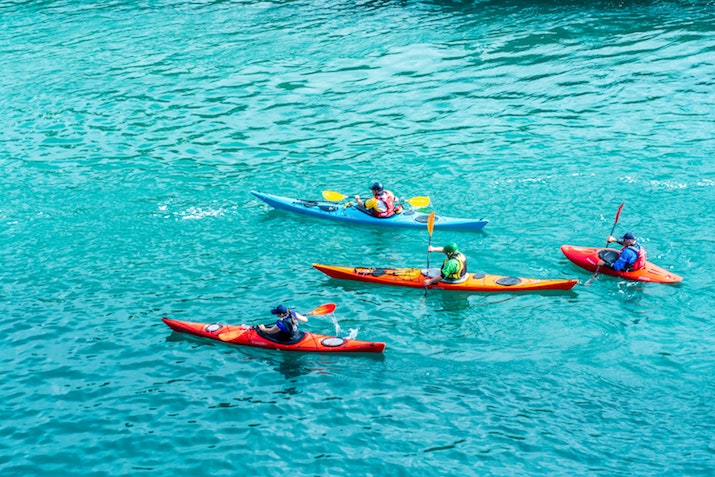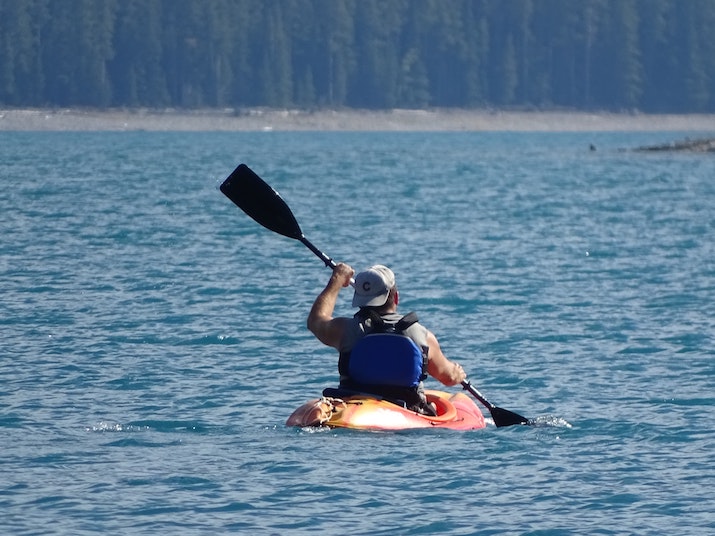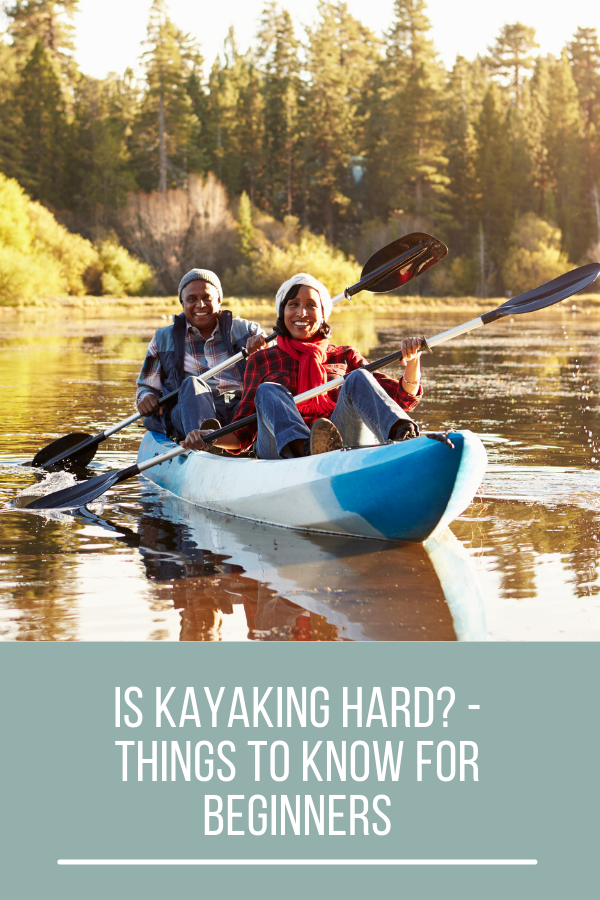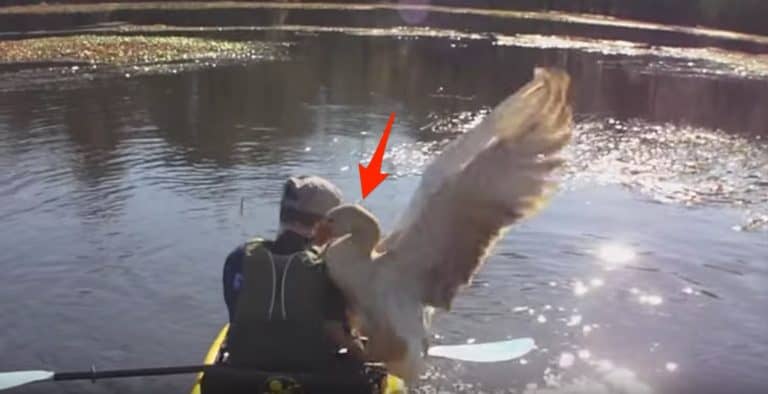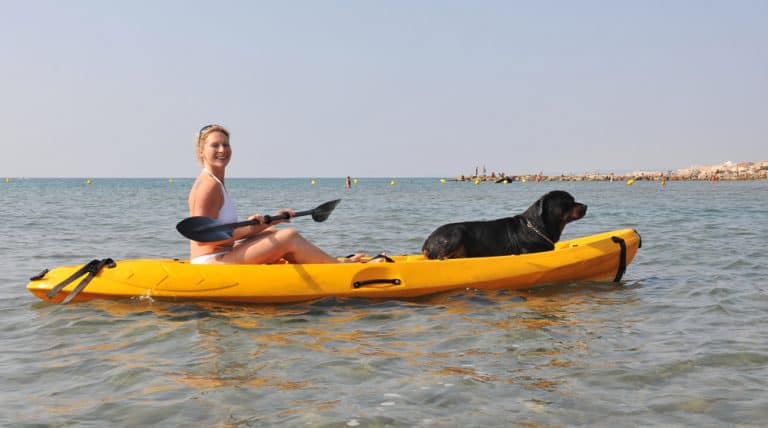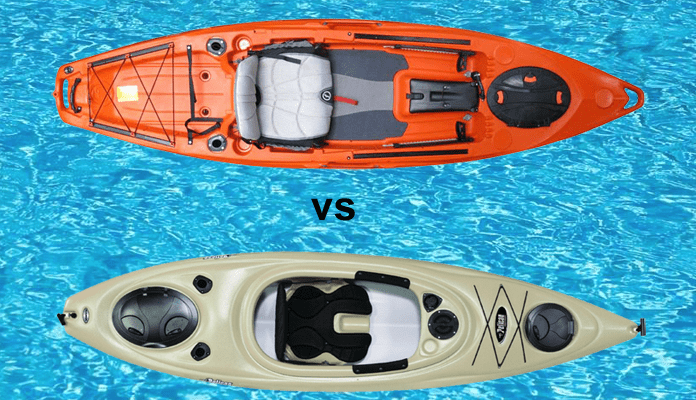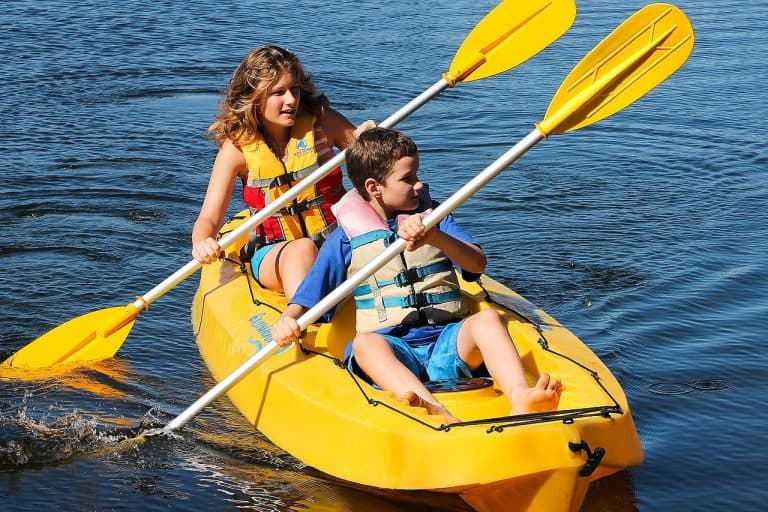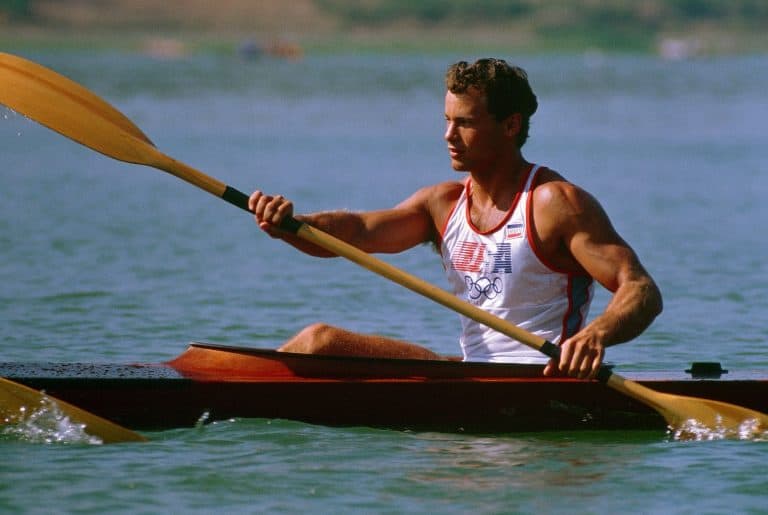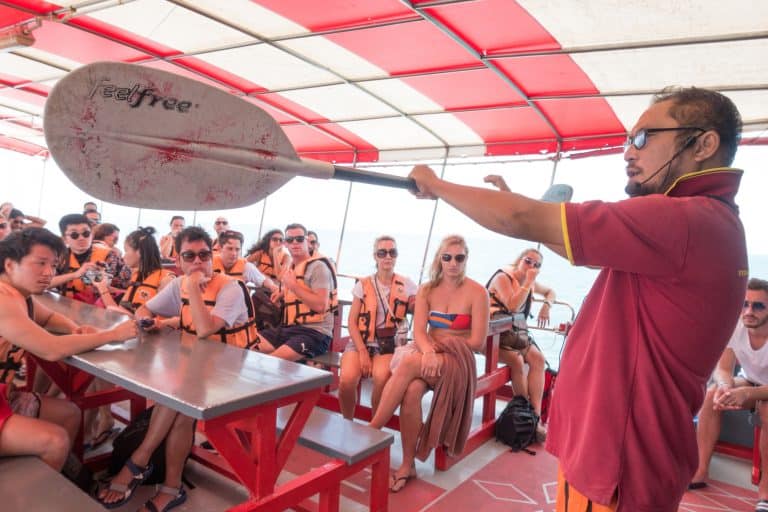If you have never tried what we think is the coolest water sport out there, it is natural to ask, “Is kayaking hard?” The answer, thankfully, is no…as long as you have proper instruction beforehand.
Even most kayak rental companies should give you some tips and insights if you have never paddled before. Obviously, there are some things to know for beginners before you get on the water.
The good news is that you can start wrapping your mind around what it will be like to paddle for the first time before you even get to the rental company’s location. Plus, you have landed on a guide that will help you do just that.
In this article, we will cover important kayaking tips for beginners and provide a few additional resources that we hope will encourage you to give kayaking a try for the first time!
Photo by Roberto Nickson on Unsplash
Is Kayaking Hard?
Photo by Josh Wedgwood on Unsplash
The reality is that kayaking can be hard, but it doesn’t have to be. With the right training and preparation, kayaking is actually much easier than a lot of other sports.
You need to know that there are a lot of different types of kayaking out there. You will NOT be doing anything remotely like the picture above on your first time in a kayak.
That, however, is also one of the coolest things about kayaking. You can go as fast or slow as you want, paddle as far as you want, or just hang out and relax in your kayak a few hundred yards offshore.
If you have never tried kayaking before, the best thing you can do is to find some type of “Introduction to Kayaking” course in your area. Most kayak guiding companies will offer this type of course and they usually last for 1-2 hours.
Instead of focusing on covering a specific distance, your guide will focus on filling your toolkit with the basic skills and techniques that all paddlers need. Then, you can book another guided tour to refine those skills and test out your physical strength in a nurturing environment.
Things To Know For Beginners
In my opinion, it is easier to be scared or skeptical of things that we do not know very much about. So let us proceed to cover some important topics and tips that all beginner kayakers should know.
Always Wear A PFD
Photo by Louis Hansel on Unsplash
There is really no reason to be kayaking without wearing a personal flotation device (PFD)…ever! The only reason that you see people kayaking without one of the best life vests for kayaking is that they do not know any better.
Kayaking is an extremely safe sport, but the small number of fatalities that occur from kayaking every year are typically attributed to the lack of wearing a PFD or having a properly fitted PFD on at the time of the accident.
Even people who are great swimmers can suffer from cold-water shock and other water-related illnesses when they go from sitting on top of a sunny kayak to fully submerged in the water below.
If you are a beginner, one of the first skills you need to master is how to self-rescue in a kayak. Trust us, you will find that learning this skill is much easier if you are not worrying about keeping your head above water while you are practicing.
Do Not Hesitate To Ask For Help
Photo by Imani on Unsplash
Most beginners have the most trouble with simply getting in and out of their kayak safely. Thankfully, most rental companies will have staff members that are trained to help you out in these instances.
If you are feeling a little bit unsure about what your kayak will feel like once you sit down inside of it, please do not hesitate to ask for help. It is better to get an extra set of hands than to capsize before you have even gotten the blade of your paddle into the water.
On the opposite side of things, many people can experience sea legs when they return to shore after an hour or two on the water. It can take a second to gain your balance when you step out of your kayak if you are not used to this phenomenon.
So this is also a great time to signal one of the company’s staff members to lend an extra hand. With their help, you will be able to exit your kayak safely while keeping your knees, ankles, hips, and other joints healthy and ready for your next paddle.
In addition, most experienced paddlers will have no problem helping if you need aid while you are on the water. If you are paddling in a place with motorized vessels, you may also be able to flag a boat down if you need assistance.
Paddle Along The Shore
Photo by Sheri Slaughter on Unsplash
It can be hard to judge long distances when you are looking out over a large body of water. When I used to guide around Lake Tahoe, we would invariably have people overestimate their ability every year.
The lake is roughly 21 miles from north to south and it felt like we would get at least one group of renters per summer that would say they were thinking of paddling down to the southern part of the lake for the day.
For the record, most kayakers average a speed of roughly two miles per hour. Not even a super fast and experienced kayaker could paddle 21 miles in the course of a full-day kayak rental (~8 hours).
If you are new to kayaking, it is best to stay close to the shoreline during your paddles. As you go, note landmarks on shore according to the amount of time you have been paddling.
This will help you know how far away from your landing spot you are when you turn around and make your way home. Plus, paddling close to shore will always leave you with a minimal distance to get back to land if you need to for any reason.
In the worst-case scenario, you will only have a short swim into a place where the water is shallow enough for you to stand and work on re-entering your kayak.
Keeping Your Balance
Photo by Tatum Bergen on Unsplash
Another thing that many beginners struggle with is keeping their balance. They will fight the natural rock of their kayak so much that they become fatigued very quickly and decide to return to shore.
Today’s modern kayaks are designed to stay upright! Why would a kayak manufacturer make a kayak that intentionally tries its best to get you wet?
They wouldn’t, but keeping your balance in a kayak does not always come naturally for everyone. Fortunately, there is a pretty basic rule that I like to teach all of my new kayakers and it is called the ”˜Nose Over Belly Button’ rule.
It functions just like it sounds in that the best way to keep your kayak stable is to focus on keeping your nose vertically aligned with your belly button once you are seated in your kayak.
If you lean too far to one side of your kayak or the other, the odds of it tipping over increase dramatically. This is common for many new kayakers because they lean as they try to paddle harder to gain more speed or fight into a headwind.
Proper paddling technique, however, involves a subtle twist of the torso with each paddle stroke (instead of a lean). If you’re leaning, you’ll soon be dreaming…about getting back to shore and into some dry clothes!
Pack Lots of Water
Photo by Bindle Bottle on Unsplash
For some crazy reason, I see far too many beginner kayakers (and outdoor recreationists of all pursuits) out and about without a reusable water bottle. For one, that is a danger to your own personal health.
Two, if you are still relying on single-use plastic water bottles, just know that they are one of the major culprits for the degradation and destruction of the very environments that we kayakers rely on for our favorite form of recreation.
Okay, environmental rant over! Seriously, though, I recommend packing at least one liter of water per person for every two hours that you will be out on the water.
Sure, that might seem like a lot, but the cost of dehydration and heat-related illnesses will be far greater than that of having extra water left when you finish your paddle.
If you pack appropriately, you should have no trouble staying hydrated on the water. You will just need to remember to stop paddling, take a deep breath, and drink some of the water you brought every now and again.
Wear Appropriate Synthetic Clothing or Swimwear
Photo by Raoul de Plessis on Unsplash
Cotton clothing should always be avoided when you are kayaking because it soaks up sweat and doesn’t dry quickly if you do get wet. Plus, it can actually keep you cold if you are paddling in wet and windy conditions.
Synthetic, moisture-wicking layers are the best choice for paddling because they dry quickly and breathe very well on hot days. You would be surprised, however, by how many beginners I see paddling in jeans or sweats.
Kayaks are unlike boats in that it is highly unlikely that you will remain 100% dry for the entirety of your paddle. Because most rental companies offer only the best sit on top kayaks to their guests, it is natural for a small amount of water to enter the cockpit and soak your backside.
This is because sit on top kayaks have scupper holes that drain the water out of the cockpit if it splashes over the gunwales. It also makes it much easier to drain and climb back into this type of kayak if it capsizes.
That is the primary reason why it is the kayak of choice for beginners. Just do not expect to stay completely dry when you are paddling one of these kayaks because it is a water sport after all!
Wear Sandals or Water Shoes
Photo by Andrew Neel on Unsplash
For the same reason that I suggest wearing synthetic clothing, I do not recommend wearing tennis shoes or loafers while kayaking. Yes, I have seen someone try to paddle in loafers before!
While there is a small chance that most of your body will stay dry while kayaking, your feet will absolutely get wet as you are climbing in and out of your kayak at the shoreline unless you are launching from an ADA-accessible kayak dock.
This means that your tennis shoes will get wet and they will stay wet for the duration of your paddle. For folks that wear some type of sandals or water shoes, however, you will notice that your feet dry quickly and you may even voluntarily dunk them back into the water to cool off on a hot day.
Chaco and Teva are two examples of great companies for adventure sandals that are wonderfully suited for kayaking. If they are a little too pricey for you, however, you can always just pick up a pair of inexpensive water shoes from a local shop.
For paddling during the colder months, most kayakers opt for insulated booties that both protect your feet and keep them warm.
If you are thinking about ditching shoes all together to avoid getting your tennis shoes wet or paying for new sandals, I suggest thinking twice about that. You never know quite when you will need to exit your kayak quickly to climb back onshore or help a fellow paddler in need.
If you happen to need to exit your kayak in a very rocky or unfriendly location, your feet are going to take a beating. That’s why a pair of the best sandals or best water shoes for kayaking are always recommended.
Find Friends To Take A Lesson With You
Photo by Brandon McDonald on Unsplash
Learning any new skill can be intimidating on your own. I just very recently passed up an opportunity to learn how to scuba dive because I was uncomfortable with the thought of going into the introductory class by myself.
So, start telling your friends about your desire to learn how to kayak. Some might think that is cool but remain uninterested in trying the sport out for themselves.
You might just find that you have something in common with an unexpected friend, which would be the desire to learn how to paddle a kayak. If this ends up being the case, you will have someone to go into a class by your side.
If you can find multiple friends that are interested in learning how to kayak, you may also be able to score a group discount on a ”˜Discover Kayaking’ course in your area.
Be Patient With Yourself
Photo by Obi Onyeador on Unsplash
The last piece of advice that I would like to share is to remember that you are on your own schedule. I find that many new kayakers get caught up in comparing themselves to other paddlers in their group or, in the worst case, their guide.
This is a dangerous thing because it can make you feel discouraged about kayaking before you have even given yourself a complete chance to test your skills and find comfort sitting in a kayak.
Everyone is at a different point in the growth of their kayaking skills and it is important for beginners to honor that. Have patience with yourself so that you allow for the space to learn new skills and keep your mind open to new types of paddling.
Final Thoughts
Photo by G-R Mottez on Unsplash
If you are still nervous about giving kayaking a try, just remember that your first paddle can be as long or short as you want it to be. If you aren’t feeling particularly comfortable, there is no shame in turning around and heading back to the beach.
In fact, most rental companies would probably prefer that you are honest with yourself about your skills and comfort level. I’ve known too many people that have pushed their limits too far and caused the rental company to have to go out and rescue them at the end of the day.
In the end, we want to gently encourage you to push your comfort zone to try our favorite sport. However, we don’t want you to push so far out of your comfort zone that you have an accident and never return to the sport of kayaking again.
We hope that the tips and insights we have provided in this guide have made you feel more comfortable about trying kayaking. If it brought up any questions or there is anything that you are not quite clear on, feel free to drop us a comment below and we will get back to you as soon as possible!


